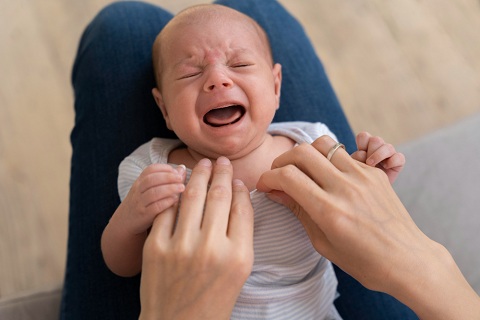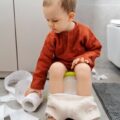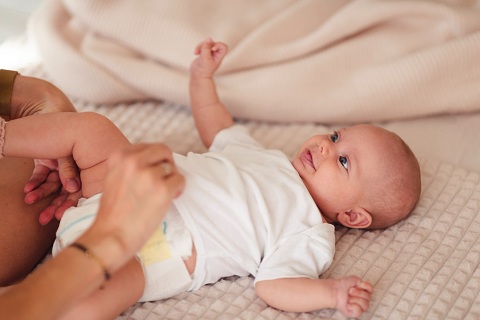Infantile piles, also known as hemorrhoids, are a common condition among infants that can cause discomfort and concern for parents. Understanding the causes, symptoms, and treatment options is essential for managing this condition effectively.
Infantile piles refer to swollen veins in the rectum and anus of infants. They can be caused by various factors such as constipation, straining during bowel movements, or even genetics. Symptoms may include rectal bleeding, pain, itching, and discomfort during bowel movements. Diagnosis often involves a physical examination by a healthcare provider.
What Causes Infantile Piles?
Infantile piles can be caused by a variety of factors, including:
- Constipation: Infrequent bowel movements can lead to straining during bowel movements, increasing the risk of hemorrhoids.
- Genetic Predisposition: Some infants may have a genetic predisposition to developing hemorrhoids.
- Diarrhea: Chronic diarrhea can irritate the rectum and anus, leading to inflammation.
- Poor Diet: Lack of fiber and fluids in the diet can contribute to constipation, exacerbating the risk of hemorrhoids.
Types of Infantile piles

There are two main types of infantile piles, also known as hemorrhoids in infants:
- Internal Hemorrhoids: These occur inside the rectum and are typically painless. Internal hemorrhoids may cause bleeding during bowel movements but are not usually visible or palpable from outside the body.
- External Hemorrhoids: These develop around the anal opening and can be felt or seen externally. External hemorrhoids may cause discomfort, itching, swelling, and sometimes pain, especially during bowel movements or when sitting for extended periods.
Treatment Options
Home Remedies:
- Keeping the affected area clean and dry after every defecating.
- Using gentle wipes or cotton balls instead of rough toilet paper
- Applying a cold compress to reduce swelling and pain
- Encouraging adequate fluid intake and a high-fiber diet to prevent constipation
Prevention Strategies for Infantile Piles
Preventing infantile piles involves adopting healthy habits and lifestyle choices. Here are some preventive strategies:
- Encourage Physical Activity: Regular exercise can promote healthy bowel function and reduce the risk of constipation.
- Promote Good Toilet Habits: Teach children proper toilet habits, including not delaying bowel movements and avoiding straining.
- Monitor Diet: Ensure your child’s diet includes plenty of fiber-rich foods and adequate hydration.
- Address Underlying Conditions: If your child has chronic diarrhea or other underlying conditions, work with a healthcare provider to manage these issues effectively.
- Keeping the anal area clean and dry: Keeping the anal area clean and dry is crucial to prevent infections, irritation, and discomfort. Moisture and bacteria can lead to skin issues if not properly managed.
When to See a Doctor
It’s important to consult a healthcare provider if:
- If the child’s anus swells or if you notice something like a small grape near the anus, you should consult a doctor.
- Symptoms persist or worsen despite home remedies
- There is excessive bleeding or pain
- The infant is experiencing recurrent piles
- If the colour of the anus changes, then a doctor should be discussed.
Managing Infantile Piles: Effective Solutions
Dietary Changes
A diet rich in fiber and fluids can help prevent constipation, a common contributor to infantile piles. Parents should include plenty of fruits, vegetables, whole grains, and water in their child’s diet to promote healthy bowel movements.
Proper Hygiene
Keeping the anal area clean and dry is essential for managing infantile piles. Parents should gently clean the area with warm water and mild soap after each diaper change. Avoiding harsh wipes or excessive rubbing can prevent irritation.
Sitz Baths
Sitz baths, where the child sits in warm water for a few minutes, can provide relief from discomfort and help reduce swelling. Parents can consult with their pediatrician on the appropriate frequency and duration of sitz baths for their child.
Over-the-Counter Remedies
In some cases, pediatricians may recommend over-the-counter remedies such as hemorrhoid creams or suppositories to alleviate symptoms. However, parents should always follow the doctor’s advice and use these products as directed.
Risk Factor of infantile piles
Infantile piles, also known as hemorrhoids in infants, can develop due to several risk factors. These include:
- Constipation: Infants who struggle with constipation are at a higher risk of developing piles because the strain during bowel movements can put pressure on the veins in the rectum and anus.
- Diarrhea: On the flip side, frequent diarrhea can also contribute to the development of piles as it can irritate the anal area and cause inflammation.
- Genetics: There may be a genetic predisposition to developing hemorrhoids, meaning if parents or close family members have had piles, the infant may be more likely to experience them.
- Sedentary Lifestyle: Lack of physical activity can lead to poor bowel movements and contribute to the development of piles.
- Poor Diet: Infants who are not getting enough fiber in their diet may experience constipation, which in turn can increase the risk of piles.
- Straining During Bowel Movements: Infants who strain excessively during bowel movements, perhaps due to constipation or other reasons, can put undue pressure on the veins in the anal area, leading to piles.
FAQs about Infantile Piles
Stage 1 piles, also known as first-degree hemorrhoids, are characterized by swelling and inflammation of the blood vessels in the anal area. They are typically small in size and may not cause noticeable symptoms such as pain or bleeding.
Early infantile piles, especially if diagnosed and treated promptly, can often be effectively managed and resolved. However, the treatment approach may vary depending on the severity and underlying causes of the piles.
While piles (hemorrhoids) are not usually life-threatening, they can cause discomfort, pain, and other symptoms that affect a person’s quality of life. In some cases, especially if left untreated or if there are complications, piles can become a serious concern.
External piles (external hemorrhoids) are often more painful compared to internal piles (internal hemorrhoids). External piles are located around the anal opening and can cause discomfort, itching, swelling, and pain, especially during bowel movements or when sitting for extended periods.
In some cases, mild cases of infantile piles may resolve on their own without specific treatment. However, it’s essential to monitor the condition and seek medical advice if symptoms persist or worsen. Proper hygiene, dietary changes, and lifestyle modifications can also help manage and alleviate symptoms.
Conclusion
Infantile piles can be a distressing condition for infants and parents alike. By understanding the causes, symptoms, and treatment options, it’s possible to manage this condition effectively and improve the infant’s comfort and well-being.





